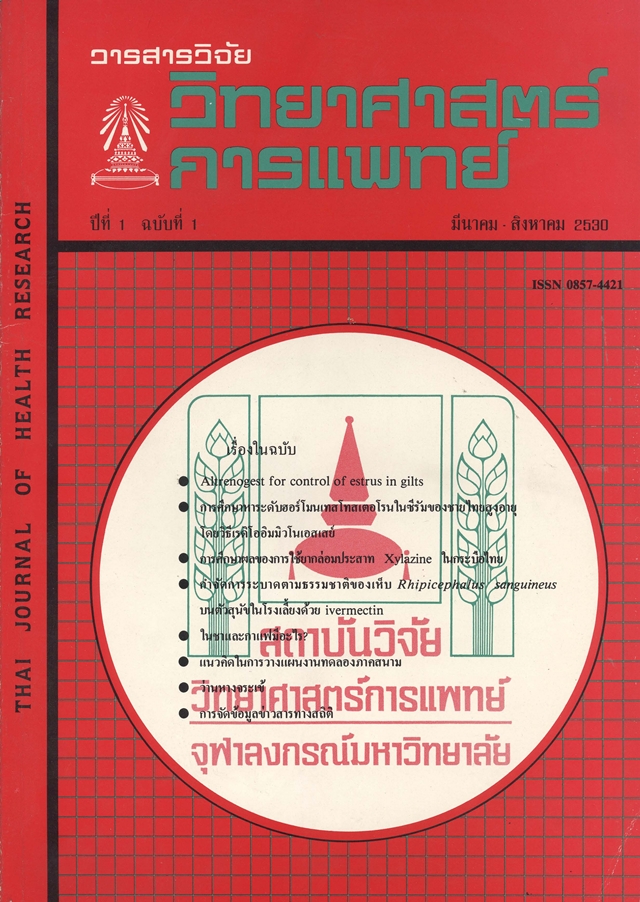Altrenogest for control of estrus in gilts
Keywords:
-Abstract
To facilitate artificial insemination (AI) in farm, Altrenogest was used to synchronize estrus. Sixty four crossbred gilts (Landrace x Large White) belonged to a private piggery at Nakhon Pathom were used. They experienced first estrus (aged between 5.9 - 8.5 mo) and were randomly allotted into 2 groups, Altrenogest treated (N = 35) and non-medicated control (n = 29). Altrenogest at the level of 20 mg was individually given with morning feed to the treated gilts for 18 consecutive days. After cessation of the treatment, detection of estrus was carried out twice daily, morning and evening while in the controls they were observed for estrus since the beginning of the trial. When animals were in heat they were first inseminated 12 h later with diluted (1:1 to 1:3) fresh semen and re-inseminated 12 h after the first insemination. Eighty eight percent (31/35) of treated gilts were in heat within 3-6 days after cessation of the treatment. While the control animals exhibited signs of heat distributively over a period of 39 days. All of the treated and 93% (27/29) of the control animals were inseminated. Performance of the treated and control gilts in terms of farrowing rate, remated and culling were 40% VS 27.6%, 48.6% VS 44.8% and 11.4% VS 27.6% respectively. Litter size at birth, born alive and litter size at weaning were 7.4 ± 1.5 VS 8.4 ± 2.8, 7.4 ± 1.5 VS 8.1 ± 2.5 and 7.4 ± 1.5 VS 7.8 ± 2.6 respectively. All traits studied were not different significantly. These findings demonstrated that, Altrenogest induced estrus in gilts which had experienced one estrus (97%) within 10 days. This phenomenon renders more advantage of using superior genetic boars both in AI and planned mating.







